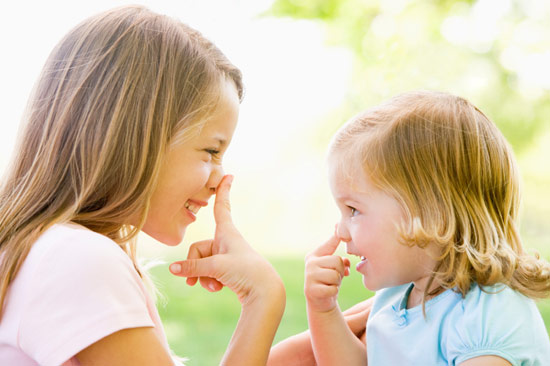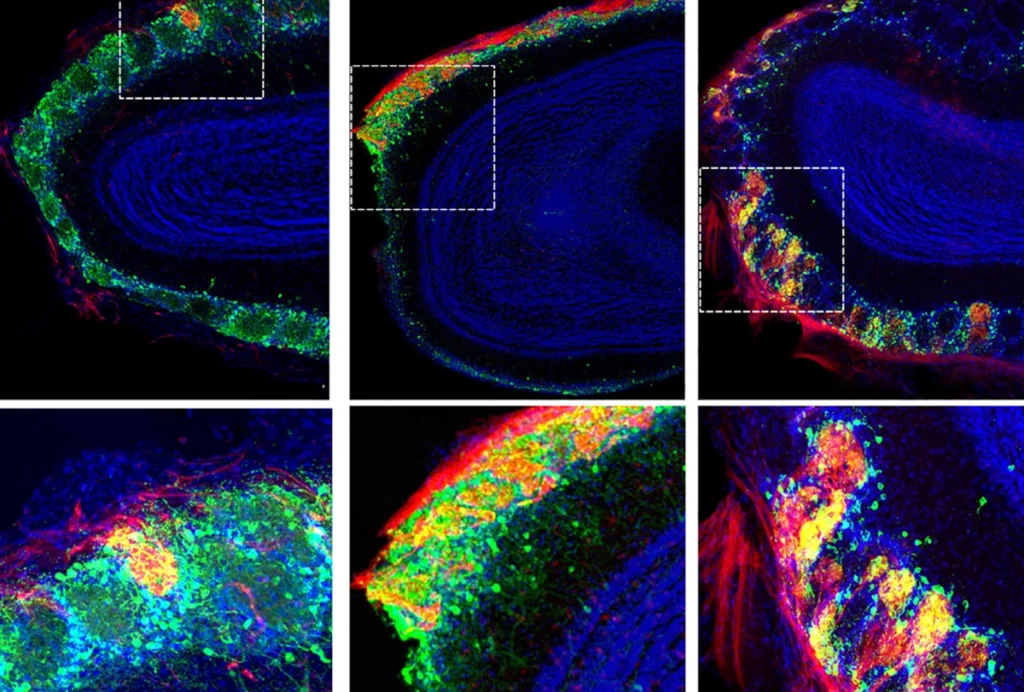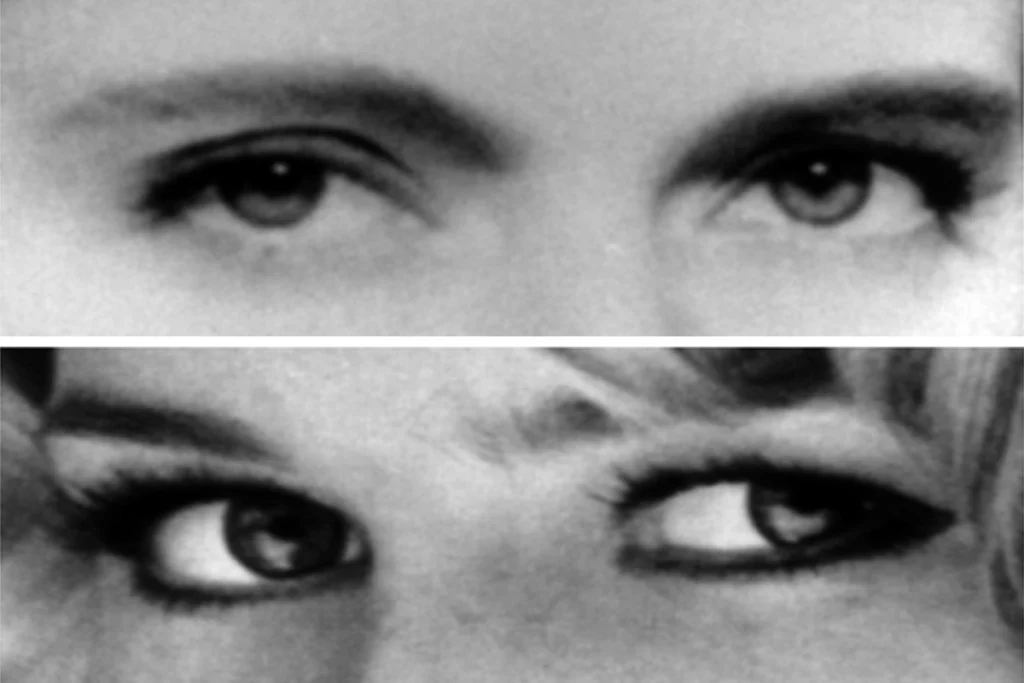‘Broken mirror’ concept of autism challenged
Several new studies challenge the ‘broken mirror’ hypothesis of autism, which suggests that defects in specialized brain cells called mirror neurons explain why people with the disorder find social interaction difficult.

Baby see, baby do: Studies in the past year have questioned the view that children with autism have trouble imitating others’ actions.
Last May, a high-profile paper in Neuron reported that people with autism do not have trouble understanding others’ actions or intentions or even imitating those actions1.
The paper did more than refute a common perception about autism. In combination with a 2007 study that showed similar results, it essentially dismantled the ‘broken mirror’ hypothesis, a popular theory in autism research.
In a new book, The Tell-Tale Brain, Vilayanur S. Ramachandran, one of the most prominent advocates of the hypothesis, argues that although it does not fully explain autism, the theory can account for most of the defining features of the condition — such as difficulties with pretend play, lack of empathy, and theory of mind.
Mirror neurons — a specialized type of brain cell that fires when an animal acts or observes an action — seem to not work properly in people with the disorder, according to studies published over the past decade.
The results appeared to explain the difficulties with language acquisition, imitation and empathy experienced by people with the disorder.
Championed by several prominent researchers, this ‘broken mirror’ hypothesis of autism quickly gained traction, receiving a great deal of media attention.
But even at its height, the exact nature of the defect, and how it arises, remained unclear.
“The broken mirror hypothesis has so many holes in it and is nowhere close to providing an explanation of autism,” says Antonia Hamilton, lecturer in psychology at the University of Nottingham in the U.K. She notes, for example, that although the mirror neuron system is crucial for controlling one’s own movements, children with autism do not necessarily have motor problems.
Rogue waves:
Mirror neurons were discovered in 1996 by Giacomo Rizzolatti, professor of neuroscience at the University of Parma in Italy. While recording the activity of single cells in the prefrontal cortex of macaque monkeys, Rizzolatti noticed that some cells fire not only when the animals perform a certain action, but also when they observe other monkeys performing the same action2.
Since this discovery, mirror neurons, which humans share only with primates and birds, have been touted as the physiological basis for everything from altruism and empathy to language development.
Based on a study of mu waves — an oscillating pattern of electrical activity in the brain — mirror neurons are almost certainly involved in autism, argues Ramachandran, director of the Center for Brain and Cognition at the University of California, San Diego.
Mu waves are normally suppressed during voluntary movements, and when observing another person performing actions3. Ramachandran and his colleagues found in a study of 30 people with autism that their mu waves were suppressed when they performed various actions themselves, but not when they watched others performing them4.
Since then, several other groups have published data supporting the broken mirror hypothesis.
In 2005, Marco Iacoboni, professor of psychiatry at the University of California, Los Angeles, used functional magnetic resonance imaging to monitor the brain activity of ten high-functioning children with autism and ten age- and IQ-matched controls while they looked at and imitated photographs of emotional facial expressions.
Both groups performed the task equally well, but the children with autism showed less activity in the inferior frontal gyrus, a brain region believed to contain mirror neurons5.
A 2005 study showed that brain regions containing mirror neurons exhibit less activity in people with autism than in controls during the observation of finger movements6.
Active imitation:
However, other researchers have failed to find any evidence that the mirror neuron system is defective in autism.
In a 2007 study, for example, Hamilton and her colleagues tested 25 children with autism and 31 controls on several goal-directed imitation tasks shown to activate the motor and premotor cortices, believed to contain mirror neurons7.
In one of the tasks, the children sat at a table and were asked to copy an adult as she touched a pattern of dots on the tabletop.
“Typical children make systematic errors on this task,” says Hamilton, “because they copy the adult’s goal but use the wrong hand.” The children with autism exhibited exactly the same systematic error, meaning that they selectively imitate the goal of the action.
Similarly, Ilan Dinstein, then a graduate student at New York University’s Computational Neuroimaging Laboratory, scanned the brains of high-functioning adults with autism and controls while they observed goal-directed hand actions. He found that both groups show the same pattern of brain activity in brain regions believed to contain mirror neurons[^1].
“The behavioral and imaging data suggest there is nothin g wrong with basic mirror systems in [people with] autism,” says Hamilton.
She argues that the broken mirror hypothesis relies on several unsupported assumptions: that the mirror system is responsible for understanding goals and imitation, that goal understanding and imitation are abnormal in autism, and that these deficits cause the social difficulties seen in autism.
Still, its advocates argue that the new data do not refute the hypothesis.
“The mirror neuron system itself could be normal [in autism], but its projections, or the brain regions it is projecting to, could be abnormal instead,” Ramachandran says. He adds that the mixed results could be due to the heterogeneity of the autism spectrum disorders.
References:
-
Dinstein, I. et al. Neuron 13, 461-469 (2010) PubMed
-
Rizolatti G. et al. Brain Res. Cogn. Brain Res. 3, 131-141 (1996) PubMed
-
Cochin S. et al. Electroencephalogr. Clin. Neurophysiol. 107, 287-295 (1998) PubMed
-
Oberman L. M. et al. Neuropsychologia 46, 1558-1565 (2008) PubMed
-
Dapretto M. et al. Nature Neurosci. 9, 28-30 (2005) PubMed
-
Théoret H. et al. Curr. Biol. 15, R84-5 (2005) PubMed
-
Hamilton A. F. et al. Neuropsychologia 45, 1859-1868 (2007) PubMed
Explore more from The Transmitter

Rat neurons thrive in a mouse brain world, testing ‘nature versus nurture’
